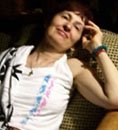In the case of what follows The Steiny Road to Operadom: The Making of American Operas, the next big project is an opera. The subject of this opera concerns the writers Jane and Paul Bowles. Those who know the work of these two American ex-pats who lived in Tangier, Morocco, for a significant portion of their lives most likely consider them writers’ writers or possibly cult figures. They had an unusual marriage—both pursued same sex extra-curricular lovers. Paul Bowles who is best known for his novel The Sheltering Sky had a walk-on part in Bernardo Bertolucci’s film by the same name that was based on Bowles’ bleak magnum opus. Paul, a protégé of Aaron Copland, was also a composer who, for example, wrote incidental music for a number of plays by Tennessee Williams. Jane Bowles is best known for her novel Two Serious Ladies and her play In the Summer House that was produced on Broadway in the 1950s.
What drew me to them as subject matter for an opera was this—Paul Bowles was told by Gertrude Stein to go to Morocco (as a young man, he sought her out when he ran away to Paris) and during the summer of 1982, I traveled to Tangier for a writing program with which Paul was involved. Paul helped me with some of the poems that became part of my opera libretto Gertrude Stein Invents a Jump Early On. It seemed logical to me to pick a subject for my next opera, which in some way would point back to my first.
In February with the help of a composer friend Stefan Weisman, I made the acquaintance of John Supko, who for five years before Paul Bowles died in 1999 was corresponding with Bowles and sending the elderly composer his (Supko’s) original musical compositions for critique. Once I showed Supko part of my work-in-progress libretto, he was immediately interested and enough so to initiate writing a grant to fund work on the project. Therefore, I decided that before the grant awards are announced, that it would make sense for me to meet this composer. To do this required going to Paris where Supko is studying Erik Satie, the subject of his doctoral dissertation at Princeton University.
Our first face-to-face meeting took place on the Ile St. Louis along the Seine at Café Le Lutetia where John suggested the French aperitif typically sipped in the hot summer months called pastis.


Although I had never tried that drink which is made from star anise (licorice flavor), the night before at a birthday party for poet Margo Berdeshevsky, one of the French writers in attendance preferred pastis to champagne. I thought if someone could turn down that wonderfully delicious champagne (and I only like champagne if it is the best), that I should give the pastis a try. John ordered and then when it arrived, he warned that that the alcohol content was quite high, so he poured in some water, as is the custom. It was quite refreshing and it was beyond me to know if the drink altered my perception of things, but there I was in Paris under clear skies and along the placid Seine drinking the drink that replaced absinthe which was banned in 1915.
After the drinks and the talk about Bowles, ideas for the opera, backgrounds, the do-you-know-so-and-so, we headed to Auberge de Jarente, a Basque restaurant where we were also meeting my husband Jim Rich. Over deliciously prepared and reasonably priced dishes like frog legs, quail, and cassoulet, we covered new ground. Nothing like changing venues and the participant mix to channel new conversation and perspectives. Later, in my stay John, Margo, and I went to a concert together.
I spent a week in Paris which included Margo Berdeshevsky’s birthday party at Cafe Louis Philippe (66 Quai de L'Hotel de Ville) where I met Marilyn Hacker, Sandra Gilbert and other poets and writers, a reading at Shakespeare & Company, visits to six art museums (the Rodin, Musée de L’Orangerie, Picasso, Musée d'Orsay, Louvre, Musée du Luxembourg, and Centre Pompidou), two concerts (an early music event featuring music from Francois I to Henry IV and experimental classical music Le Noir de L'Étoile by Gérard Grisey) and Euro-free window-shopping tours. Did I talk about The Steiny Road book? You betcha and I even handed out some of my bookmarks!
Here is the gallery of photos depicting some of my activities in Paris.





















